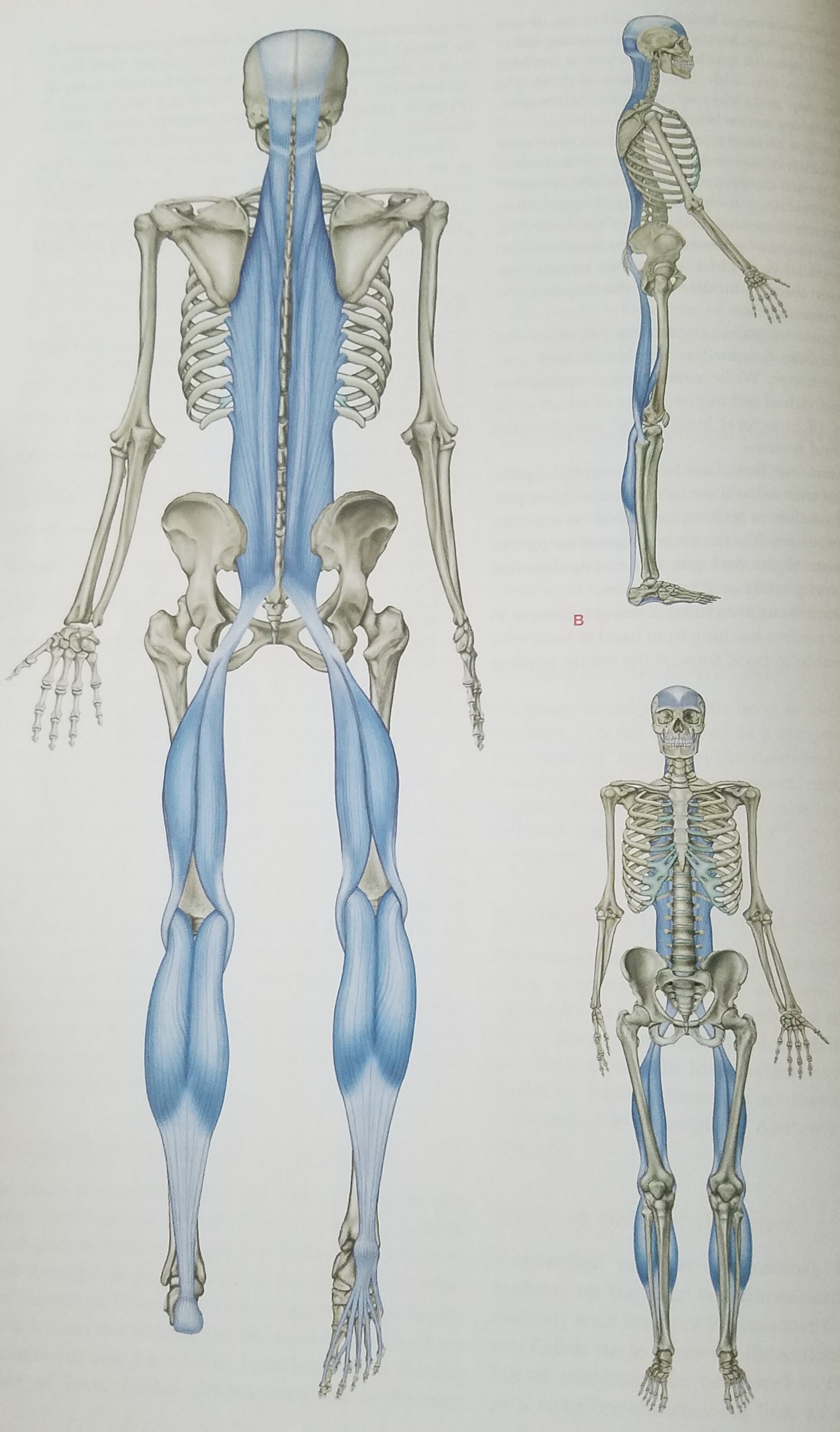Fascia Friday (1st in a Series) - Superficial Back Line
Today’s post is the first of a series that will examine the body’s tensile connective tissue network, known as fascia, how it works in your body and how interconnected various parts of our bodies truly are. This can be a heavy science-y topic, but my goal is to help you understand how important your fascia is and how to improve pain/movement - so stick with me!
We’re going to discuss “trains” of fascia and how they connect parts of our bodies, just like train tracks connect parts of a state/country/etc. The use of fascial “trains” was introduced by Thomas Myers in his book, Anatomy Trains. This series of posts will look at the major fascial “trains,” what they connect, common issues in each train, and how to deal with those issues to relieve pain and improve movement.
The first fascial train that we’re going to look at is called the Superficial Back Line. “Superficial” simply refers to the fact that it’s closer to the surface of your skin than other structures. In later posts, we’ll look at deep lines which are farther from the skin and closer to your bones and internal organs.
Here is a look at the Superficial Back Line:
Superficial Back Line from Anatomy Trains by Thomas Myers (p.74)
As you can see, the Superficial Back Line (SBL) runs from the tips of the toes, along the bottom of the foot, around the heel, up the back of the calf and leg, moving up the back, up the rear of the neck to the top of the head and ends at the brow line. This is a large train and ties together basically the entire rear of the body.
To illustrate how this fascial line interacts - bend over and touch (or attempt to touch) your toes and notice how that feels. Now using a tennis or golf ball (or a mobility ball), roll the ball under the bottom of each foot for about 1 minute on each side (within your pain tolerance). Now touch your toes again and notice the difference in the feeling.
See how this works??
It’s important to realize how interconnected that we are so that when you have movement issues or injuries that you treat the entire connected train and not just the injury site.
Let’s look at an example of how SBL issues might appear:
Tight feet bottom or plantar fasciitis impacts foot motion, perhaps causing improper gait (walking) and maybe even leading to excessive pronation (turning the bottom of the foot outward)
Ankle movement can be slightly limited or even compromised
Moving upward, the knee attempts to make up for limited ankle flexibility below it
The knee is poorly aligned and moves improperly - aggravating an existing issue or causing additional injury
The hip attempts to compensate for the poor knee movement, which throws off alignment and ability to carry load
Continuing upward, this might present as low back pain (but remember this issue started in the foot!)
Computer work or constant phone usage (with poor posture) stretches the upper portion of the SBL, which limits the movement of other portions of the SBL (yes, your forward slumped shoulders might be contributing to plantar fascia or calf issues!!)
As you can see - issues present in the foot/ankle can have a drastic impact all the way up the posterior side of your body!!
So what can you do?
Be sure to use a ball to work the fascia on the bottom of the foot - this will give you additional “length” in the Superficial Back Line and perhaps help with calf, hamstring or even low back pain
If you have knee issues, look at movement in your ankles and hips - it’s rarely the area where the pain is felt. (Analogy - pain is the victim, the cause is the criminal - treat the criminal, not the victim!!)
Realize how interconnected your body is and ensure that your fitness program (strength/flexibility/etc.) addresses the connectedness of your body
You can use the same golf/tennis/mobility ball (gently) on the muscles of your upper neck (just below the rear skull), called suboccipital muscles - these muscles are tight in most people due to computer/phone use and poor seated posture
Ensure that you have a plan to maintain your soft tissue using self-care or massage therapy so that you maximize your mobility - which can also help when you are working on your strength/stability.
That’s all for this week’s post, shoot me a message if you have any questions - let me know!

